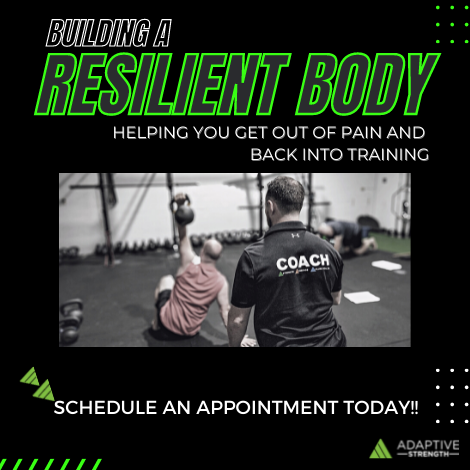Do you wake up in the mornings and struggle to walk due to Achilles pain? Or every time you go for a jog do your Achilles flare up? After years of playing football I know mine have
This is surprisingly a very common struggle that people deal with
As an exercise physiologist, I am often asked about the best exercises to alleviate Achilles pain. The Achilles tendon is the largest tendon in the body, and it connects the calf muscles to the heel bone. Overuse or injury to this tendon can cause discomfort and even hinder mobility. However, with the right exercises and precautions, you can improve your Achilles health and prevent future injuries.
During walking and running, the load experienced by the achilles tendon reaches up to 4 and 8 times your body weight!
Why did you get achilles tendinopathy?
A way to think about it is when the intensity, frequency and volume of achilles tendon loading, such as during walking, running or playing sports, exceeds your capacity to recover and adapt appropriately.
Here are too classic examples:
For the active individual, such as a regular runner, it often comes down to doing too much, too soon. For example, if you normally run half marathons but suddenly increase your total running mileage in preparation for a marathon that you want to do next month, that spike in training load may exceed your current capacity leading to the flare up
For the less active individual, it might be related to a gradual decline in general physical activity and overall well-being, which represents a decrease in capacity that’s more easily exceeded.
Therefore, the goal of rehab is to balance out this equation, so that your capacity is greater than or equal to the various loads you’re experiencing on a day to day and week to week basis. It’s also important to point out that other lifestyle factors like sleep, stress, and nutrition can influence this equation.
Keep the goal of rehab simple- build your capacity
- Improve your tolerance to various forms of loading
- Restoring the function of your achilles tendon and calf, the rest of your kinetic change, and you, the person, in general
Rehab Stages:
Following is a stepwise progression of exercises that can be implemented to gradually increase your tolerance and function overtime. You progress from one stage to the next based on your symptoms, function and tolerance.
- Stage 0: Isometrics
- Stage 1: Heavy Slow Resistance
- Stage 2: Energy Storage & release
- Stage 3: Return to Activity
Use the following as a guide when to progress from one stage to the next:
You’re not only going to monitor symptoms during exercise, but immediately after and the following day. Ask yourself 3 questions:
- Is my pain tolerable during exercise? If it’s helpful for you, you can rate your pain on a scale from 0-10 and determine the highest acceptable number for you. Some physical therapists might recommend staying at a 3/10 pain or less while others might suggest 5/10 pain or less. You get to decide.
- Is my pain better, worse, or the same after exercise? Achilles tendinopathy may exhibit a warm-up phenomenon where symptoms actually improve with physical activity, so it’s possible that you feel better after exercising.
- Is my pain better, worse, or the same the day after exercise? This is the most important question because it gives you an understanding of how you’re responding to the current dosage of exercise. If you feel fine during and immediately after exercise, but you have a significant worsening of symptoms the next day, that’s an indication that you’re doing too much and need to back off a bit.
You can assess your next-day symptoms with your normal functional activities like walking or use a specific assessment, such as a heel raise.
For example, you rate your pain on day 1 with walking as a 2/10 pain. You then perform your exercise routine within tolerance, go about your day, and go to bed without any major issues. The next morning you go walking again, but this time you rate your pain as a 5/10. This means that even though your symptoms were tolerable during exercise, you might have done more than what you can currently recover from. You didn’t do any harm, but decreasing the volume or intensity would be recommended.
Progress to the next stage when your symptoms, function and tolerance feels good during and the next day for several sessions in a row
Stage 0: Isometrics (Static holds)
Example exercises:
- Double leg heel raise
2. Single leg heel raise
You could incorporate these into your routine as warm up- pick an exercise and complete 3-5 sets of 45s holds at 7 out of 10 effort with at least 2 mins rest between sets
Stage 1: Heavy Slow Resistance
Heel Raises are the foundation of any exercise program for Achilles tendinopathy
Here’s a standing, knee straight progression:
Level 1 – Double Leg Heel Raises on Flat Ground. Aim for 3 sets of 25 slow and controlled reps. Use your hands for balance as needed.
Level 2 – Single Leg Heel Raises on Flat Ground. Aim for 3 sets of 15 reps.
Level 3 – Single Leg Heel Raises on a Step. Aim for 3 sets of 15 reps.
Level 4 – Single Leg Heel Raises on a Step with Weight. Aim for 3-4 sets of 6-15 reps.
Aim to perform a minimum of 1-2 exercise, 2 to 3 days per week
You will progress from one stage to the next based on your symptoms, function, and tolerance as opposed to a given timeframe or after meeting specific criteria. However, you should be reasonable with your approach and expectations. You shouldn’t attempt single leg hopping if walking and heel raises are painful.
Stage 2: Energy Storage & Release
These exercise should be performed 2-3 times per week
Option 1: Hopping progression
- Aim for 3 sets of 30-60s
- Start with Double leg hops and once symptoms are feeling good progress to single leg hops
Stage 3: Return to Previous activities
Third stage is about gradually returning to your activity
For example, if you’re a marathon runner, you’d train for that marathon over the course of several months as you build up your volume. If you’re a recreational soccer player, the same thought process applies.
You can’t expect to just run back onto the field and play hours of soccer after doing 3 months of exercises in the gym. You have to build back up to it.
Don’t get stuck in that boom-bust cycle (Mistake 1: Too Much, Too Soon)!
Other treatments:
Foam rolling and massage may compliment your structured program for symptom reduction. However these things aren’t the focus of rehab and shouldn’t take away from the goal of progressively improving your function.
Summary:
Achilles tendinopathy is thought to occur when the intensity, frequency and volume of achilles tendon loading, such as during walking, running or playing sports exceeds your capacity to recover and adapt appropriately. In other words, doing too much, too soon.
If your pain is from doing too much, too soon, then your first goal is to find a goldilocks level of loading that keeps your symptoms tolerable during, immediately after, and the next day following activity. You’ll then implement exercises for 3 or more months to improve your function and tolerance to various activities.
There are no quick fixes for Achilles tendinopathy as it takes time, patience, consistency and a structured plan to build up capacity





